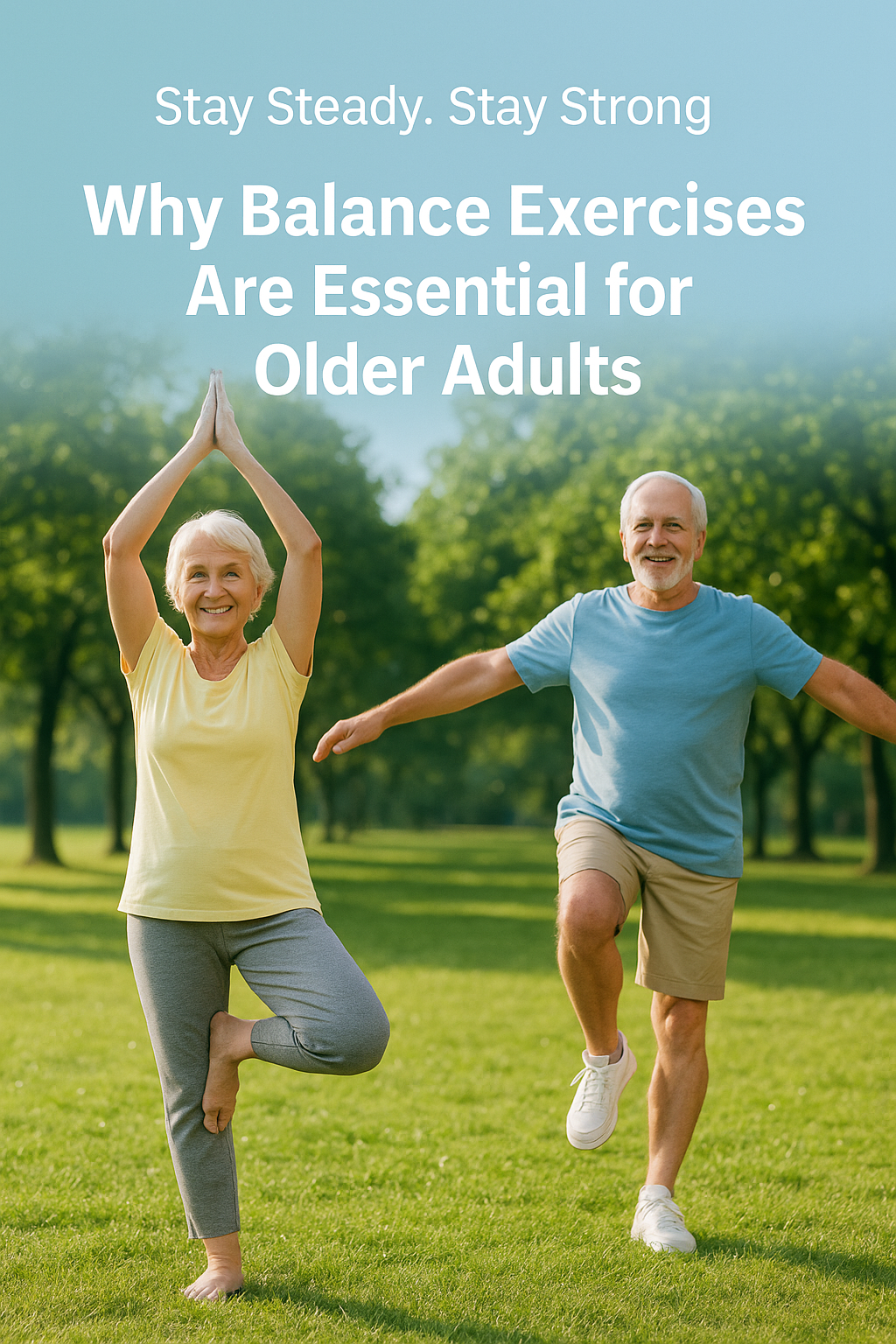
🧘♀️ Why Balance Exercises Are Essential for Older Adults
As we grow older, staying active becomes more than a lifestyle choice — it’s a key to maintaining independence, confidence, and health. While strength and cardio often get the spotlight, balance exercises are just as important — and sometimes even more so. They help prevent falls, improve posture, and keep the body agile and steady through everyday movements.
🦵 1. They Prevent Falls and Serious Injuries
Falls are one of the leading causes of injury among older adults. As balance, muscle strength, and coordination decline with age, the risk of falling increases.
Balance training strengthens stabilizing muscles in the core, hips, and legs — helping the body react faster and stay upright when it’s thrown off balance.
Simple exercises:
- Stand on one leg for 10–20 seconds
- Heel-to-toe walk across a room
- Gentle Tai Chi or yoga poses
💪 2. They Build Core and Lower Body Strength
Balance exercises aren’t just about standing still — they engage deep muscles in the abdomen, hips, and legs. These muscles support every movement you make, from getting out of a chair to walking up stairs. Strong stabilizers also protect joints and help reduce aches and stiffness.
Try this:
Shift your weight slowly from one foot to the other while standing tall. This builds coordination and improves awareness of your body’s position — called proprioception.
🧍 3. They Improve Posture and Mobility
Many older adults experience stiffness, hunched shoulders, or back pain caused by weak postural muscles. Balance routines help align the spine and retrain the body to stand tall and move freely. Better posture means less strain on joints and easier movement through daily life.
🩸 4. They Boost Circulation and Bone Health
Balance training keeps the blood flowing and strengthens bones through gentle, weight-bearing movement. This helps lower the risk of osteoporosis and supports healthy blood pressure and metabolism. Even short daily sessions can improve overall circulation and energy.
🧠 5. They Strengthen the Mind-Body Connection
Balance exercises challenge the brain as much as the body. Focusing on small, controlled movements improves coordination and keeps cognitive pathways active. Activities like yoga or dance improve both memory and mental focus while reducing stress.
❤️ 6. They Restore Confidence and Independence
Perhaps the most underrated benefit: balance training rebuilds confidence. When you know you can move safely, you’re more likely to stay active and social. This independence can have a powerful effect on emotional well-being and quality of life.
🕒 Getting Started
Start with 2–3 short sessions per week. You don’t need a gym — just a safe space and a sturdy chair or wall nearby for support. Consistency matters more than intensity.
Combine balance work with gentle stretching, walking, or light strength exercises for a complete routine.
🌿 Final Thought
Aging gracefully isn’t about doing less — it’s about moving smarter.
Balance exercises train your body to stay steady, strong, and confident through every step of life.
So the next time you think about fitness, don’t just focus on strength or endurance — make balance part of your foundation.